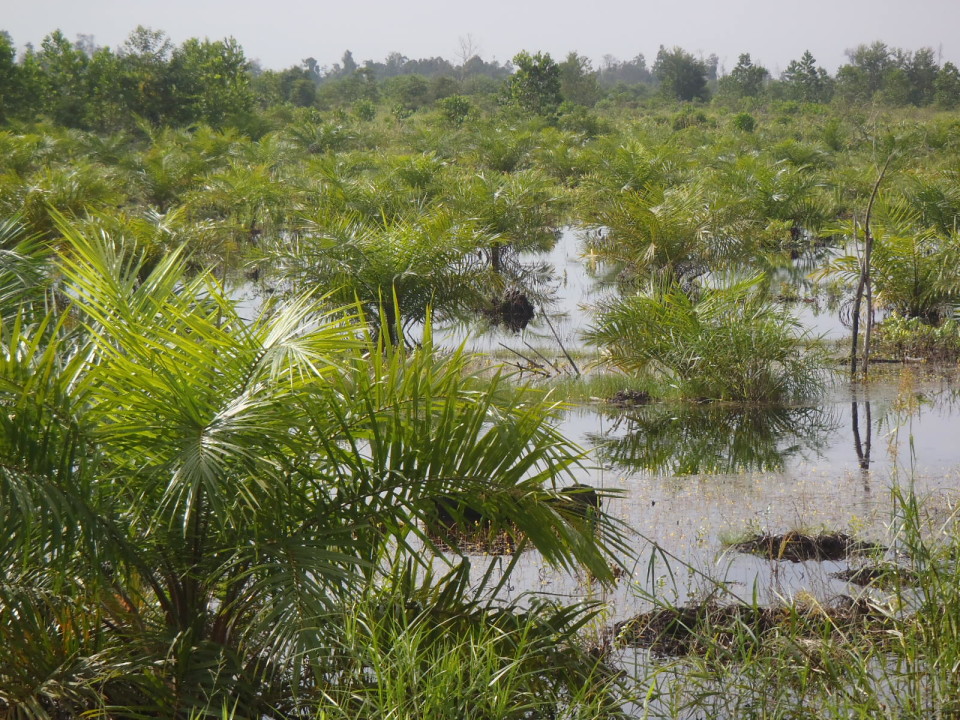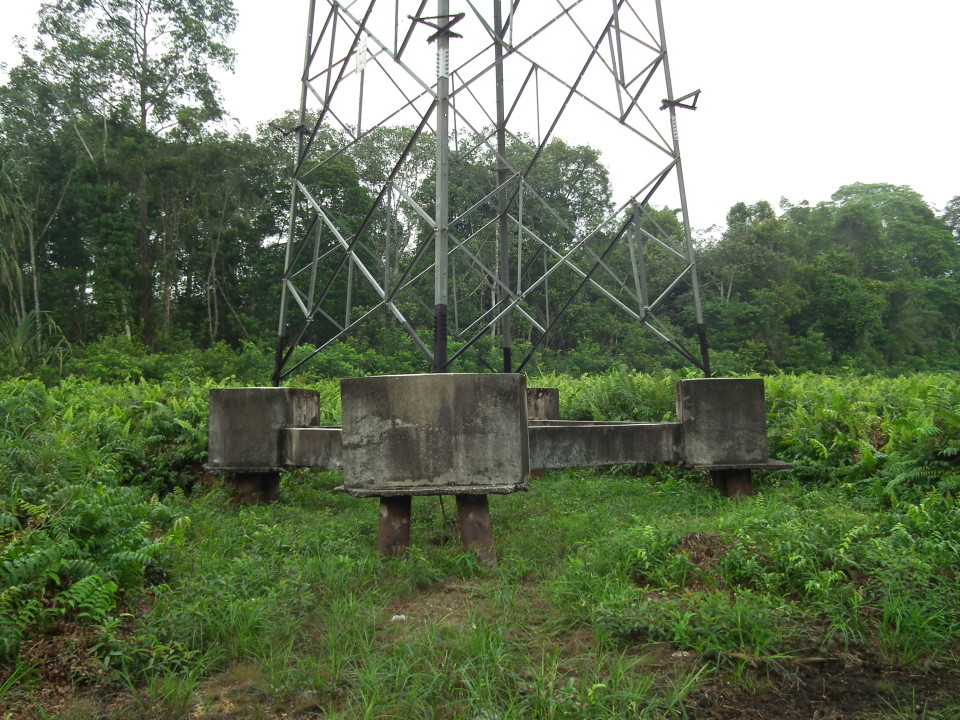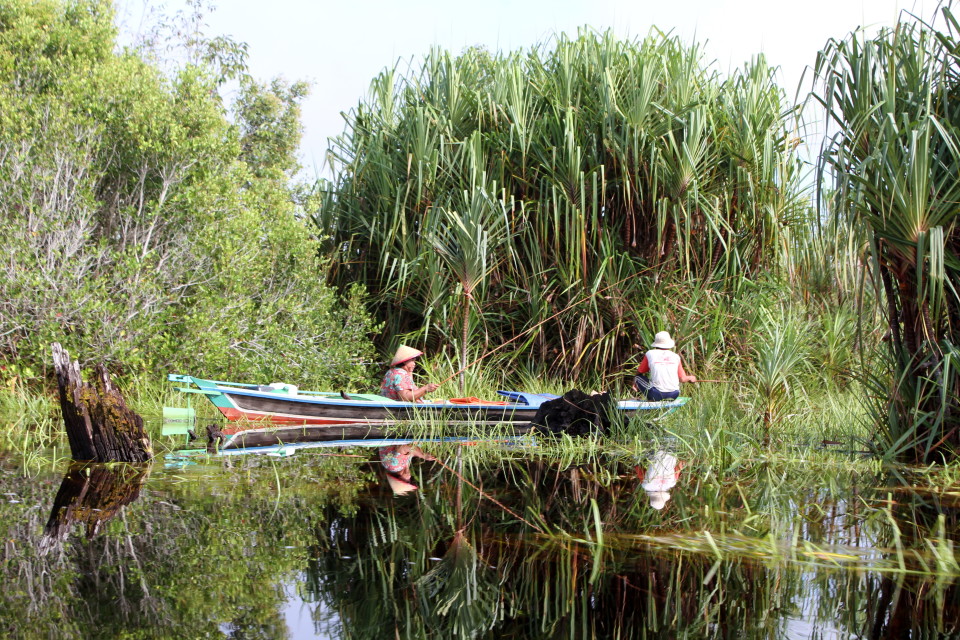
Wetlands International to highlight soil subsidence and flooding at International Peat Congress
-
Peatland conservation and restoration
Kuching, Malaysia – The International Peat Congress (IPC) 2016, a global gathering of peatland scientists and experts, is being held in Kuching, in the state of Sarawak, Malaysia. This is particularly appropriate as Sarawak holds a significant portion of Southeast Asia’s peatlands. However, over the last few decades most of Sarawak’s peatlands have been deforested and converted, mainly for the production of palm oil. One of the issues that will be discussed during the IPC, but which is still insufficiently recognized by land-use planners and decision makers in the region is peatland subsidence. Wetlands International will be participating in the Congress and will deliver a key note that highlights this issue.

Long way ahead
As the Peat Congress is starting today, peatland deforestation and conversion to plantations is continuing throughout Southeast Asia, even though there is mounting evidence that this is unsustainable. The palm oil sector in Sarawak has always maintained that their operations are sustainable and important for poverty reduction. Dato’ Paduka Ir. (Dr.) Hj. Keizrul Bin Abdullah, Chairperson of Wetlands International Malaysia said: “We are not against development, nor are we against palm oil. What is clear however, is that the present business model does not factor in the future cost of flood mitigation.” He then continued: “We should be cautious about developing peatlands for any crop that requires drainage. This needs a collaborative effort from local communities, civil society, companies and government.”
Draining peatlands for oil palm or Acacia cultivation leads to various negative effects. Drainage makes peatlands extremely fire prone, and Southeast Asia has been repeatedly hit by major peatland and forest fire events (such as last year) impacting millions of hectares and causing regional haze with severe impacts on the economy and public health. Irrespective of fires, drained peat soil also oxidizes year-round through biological processes, turning the peat carbon into the greenhouse gas CO2. As a result, Indonesia and Malaysia are major contributors to global warming. Decision makers in industry and government increasingly acknowledge these major negative consequences of peatland drainage and degradation.
Recognition of the problems
Indonesia has addressed the importance of peatland management for reducing CO2 emissions in its nationally determined contribution (INDC) to the UNFCCC. Since last year’s fire and haze catastrophe, the Indonesian government has established a Peatland Restoration Agency (BRG) which has been tasked to restore 2 million hectares of peatlands by 2020. In Sarawak, the new Chief Minister, Adenan Satem, has expressed his interest in sustaining the natural resources such as forests and peatlands for future generations and has pledged to ban logging and oil palm expansion. This is a huge change and opens up possibilities for discussing a sustainable future for the peatlands in Sarawak.

Peatland subsidence
Drainage of peatlands (which are 90% water) and consequent loss of carbon through oxidation results in the loss of the peat soil. The peatland thus subsides and over time this takes the land surface down to levels at which it becomes increasingly vulnerable to flooding. Eventually it will lead to frequent or even permanent flooding and loss of land productivity. This will have disastrous consequences for most of Southeast Asia’s lowland peatlands that are currently drained for various land uses such as for oil palm and Acacia plantations, and for the local communities as well as private sector that depend on this land. It will have huge and irreversible socio-economic consequences. It is therefore strange that this issue has hardly received any attention in policy development.
Deltares, an independent science institute, recently published detailed studies on Sarawak’s Rajang delta (a coastal peatland of 850,000 hectares) and the Kampar peninsula on Sumatra (a peatland of 675,000 ha). Both studies were commissioned by Wetlands International. The studies show that the prevalent drainage-based land-use ( e.g. oil palm and Acacia plantations) is not sustainable, and will lead in the foreseeable future to frequent and prolonged flooding, severely impeding productivity.
Major companies like Asia Pulp and Paper (APP) have recognized the need for large-scale peatland elevation mapping to develop subsidence models. They have retreated from some vulnerable peatlands and are studying options to work with alternative species that do not require drainage. The Roundtable for Sustainable Palm Oil (RSPO) strongly discourages peatlands for oil palm plantation development and requires drainability studies before replanting and monitoring of environmental damage and GHG emissions with public reporting. However, many other companies continue with business as usual. Even APP is currently building a new huge pulp mill that will largely depend on Acacia wood supply grown on drained peatlands. Peatland subsidence and its inevitable consequences in terms of fire risks and flooding threatens the supply base of the mill and may affect the economic feasibility of the company.

Call for action
Wetlands International’s position is: to prevent this socio-economic and environmental disaster, drained land-uses should be phased-out and peatlands should be rewetted. Economic alternatives like ‘paludiculture’ can be developed as part of peatland restoration efforts, using crops that are adapted to the natural wet circumstances of peatlands. Remaining natural peat swamp forests need urgent protection.
Priority should be given to the development of sustainable (non-drained) forms of peatland use, and these need urgent investment from and upscaling by companies and communities with government facilitation.
